关于美术馆免费开放答“搜狐”记者
ZIAD ANTAR
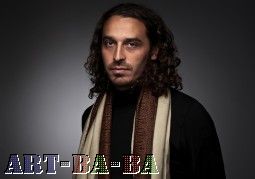
Ziad Antar was born 1978 in Saida, Lebanon. He currently lives and works in Paris and Beirut. After receiving a degree in agricultural engineering in 2001, he began working with photography and video. In 2002 Antar directed his first documentary on the French photographer Jean-Luc Moulene and he has since filmed several documentaries for the Arabic news station al-Arabiya. Without becoming overtly political, Antar often investigates a world marked by war and violence.
Ziad安塔尔出生在赛伊达,于黎巴嫩1978年。他目前生活和工作都在巴黎和贝鲁特。在2001年获得农业工程学位后,他开始做摄影和录像工作。在2002年安塔尔在法国摄影师Jean-LucMoulene的纪录片里执导了他的第一部纪录片,从那时起他拍摄了阿拉伯语新闻电视台的阿拉伯纪录片。没有成为公开的政治,安塔尔经常调查一个充斥着战争和暴力的世界。
Group Shows
群展
2010
-21 Shortlisted Artists of the Future Generation Art Prize Group Exhibition - PinchukArtCentre, Kiev
-SPAPORT BIENALE 2009/2010 Banja Luka - Spaport Biennial, Banja Luka
-Nulle part est un endroit - Centre photographique d’Ile-de-France, Pontault Combault
-Live Cinema/In the Round: Contemporary Art from the East Mediterranean - Philadelphia Museum of Art, Philadelphia, PA
-The 6th Seoul International Biennale of Media Art - Media City Seoul - International Biennale of Media Art, Seoul
-Who Wants to Act Now, or Even See Acting - Depo, Istanbul
-Morality ACT VI: Remember Humanity - Witte de With Center for Contemporary Art, Rotterdam
-Morality ACT V: Power Alone - Witte de With Center for Contemporary Art, Rotterdam
-Suspended Spaces #1 From Famagusta - Maison de la Culture d'Amiens, Amiens
2009
-Black Little Curly Hair - Kappatos Gallery, Athens
-America - Beirut Art Center, Beirut
-5x5CASTELLÓ09 Premi Internacional d’Art Contemporani Diputació de Castelló - EACC - Espai d´Art Contemporani de Castelló, Castellon de la Plana
-Pas nécessaire et pourtant indispensable. 1979-2009 : 30 ans d’art contemporain à Meymac - Abbaye St André - Centre d’art contemporain, Meymac
-Breakfast of Champions - Guest Projects, London (England)
-The Generational: Younger Than Jesus - New Museum of Contemporary Art, New York City, NY
2008
-Taipei Biennial 2008 - Taipei Biennial, Taipei
-Summer Screen - Spacex, Exeter (England)
-New Ends, Old Beginnings - Open Eye Gallery, Edinburgh (Scotland)
-New Ends, Old Beginnings - Bluecoat Gallery, Liverpool (England)
-Lieux de vie - Mémoire et phantasme de l’enracinement - Abbaye St André - Centre d’art contemporain, Meymac
-International Triennale of Contemporary Art - Re-Reading the Future - International Triennale of Contemporary Art (ITCA), Prague
-HOMEWORKS IV - Galerie Sfeir-Semler - Beirut, Beirut
-Art Now in Lebanon - Darat al Funum, Amman
-Ange Leccia - Ziad Antar - Galerie Almine Rech - Paris, Paris
2007
-12th Biennial of Moving Images - International Competition - Biennial of Moving Images, Geneva
2006
-Pawel Althamer - Centre Pompidou - Musée National d´Art Moderne, Paris
-La Cabane - Palais de Tokyo, Paris
2004
-Parking - CAC - Centre d´art contemporain de Brétigny, Brétigny s/Orge
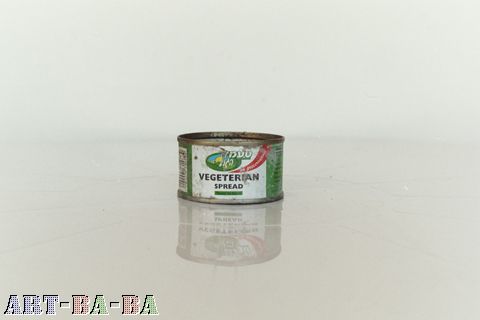
Products of War
2006 C-prints mounted on aluminum dlbond 49 x 72 cm
Products of War is a series of photographs that record the actuality of everyday life in a war situation by taking stock of basic items that are integral to survival. Antar collected these products both during and in the aftermath of the 2006 war; they include cans of vegetarian spread left over by Israeli soldiers, which the artist found in the southern town of Ayta El Chaab on the day the war ended.

Veil Series
2007 C-prints mounted on aluminum dlbond 32 x 50 cm
Veil Series touches on the recent phenomenon of religious radicalism and the surge in the popularity of the headscarf or veil. Ziad Antar spent a month working on an art project with young girls from the Ein al-Hilw camp near Saida. The girls were asked to bring headscarves with them from their homes and to create any shape they desired using them. Veil Series is a photographic expos of the end products of this art venture.

UN Tank
2006 C-prints mounted on aluminum dlbond 78 x 119 cm
This photograph of a UN tank that is parked at a perfect viewpoint in front of a picturesque countryside which is untainted by signs of destruction leads the viewer to question the tank's role.

Wa, 2004 Video (On Show) 1"56" Taipei Biennial 2008
哇,2004 录像(展场)1"56"
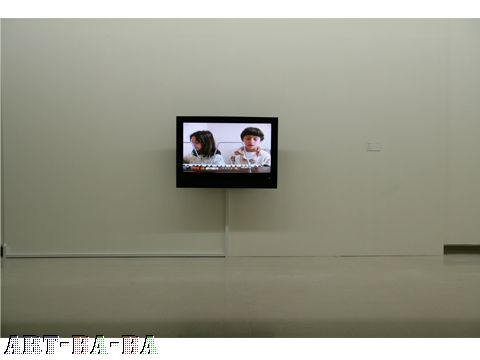
In Wa, a boy and a girl sing along to a synthesiser drum beat in flawless harmony. They demonstrate a cool and nonchalant style of performance normally reserved for adults. In the beginning their act is funny and endearing, but as the song progresses, one is captivated by their simple and straightforward delivery. It does not matter if the kids are related to the artist or if he encountered them somewhere by chance, it is about how they perform a role in this setup as children. We cannot know if it is a farce or a documentary, but we immediately become part of the game, develop an affinity, cracking up and leveling with the protagonists.
彈撥鼓是一種中東的手持鼓類樂器,常以獨奏方式來表現表演者在節奏和速度靈巧的功力。在安塔的錄像作品〈肚皮彈撥〉中,拍打的不是鼓皮,而是男性的胸膛,我們看到一位男人在淋浴間拍著他濕淋淋的身體,打出節奏。在淋浴間這種即使不具音樂天份的人也敢放聲高歌的地方,安塔安排了這齣孩子氣又未經刻意安排的戲碼。安塔刻意不用嘴巴傳達人類語言的複雜形式,而選擇了這種在語言之前、滑稽而又難以捉摸的聲響,讓身體透過這種基本、全世界都了解的語言來發聲,雖然似乎有所不足,但又令人感到十分愉悅。
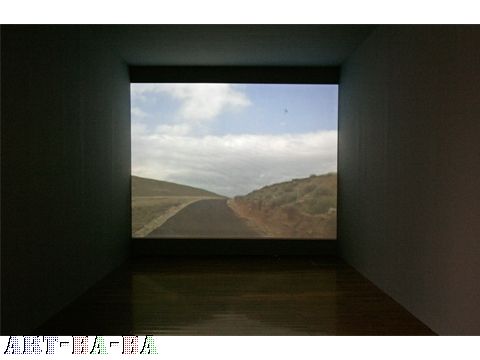
Tokyo Tonight, 2003 Viedo (On Show) 2"45"
东京之夜,2003 录像(展场)2"45"



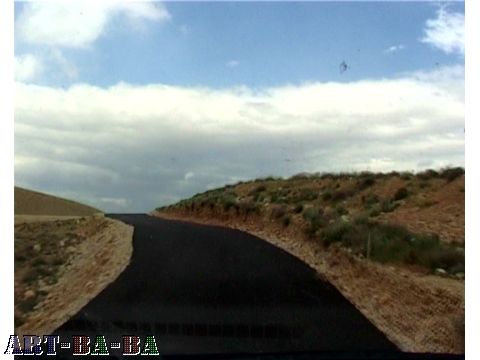
In Tokyo Tonight, a number of farmers are seen tending their sheep in the empty and depopulated meadows of the countryside. Then, as the men approach the camera, shifting from their daily routine to a moment of recognition and perhaps a few seconds of fame, out of the blue each one simply says ‘Tokyo’. They have of course been instructed by the artist to utter this total absurdity, because Tokyo is nowhere in sight. The landscape is generic of the dry rural plateaus of the South East Mediterranean, and probably the farthest thing imaginable from the overpoweringly dense, high adrenalin bustle of the city of Tokyo. The viewer can laugh, but the joke is private to Antar and the men, which has the effect of similarly isolating the audience. The shift in each character’s involvement with the camera from one who is being documented to the position of actor, also confuses the roles of all those involved, including ourselves. And, while the men say ‘Tokyo’ it does not suggest any craving on their part to go there, or even an interest in its significance. Tokyo, becomes a script repeated ad infinitum, full of association while at the same time vacuous and remote.
在〈東京之夜〉作品中,一群農夫在鄉間空曠無人的草地上牧羊。隨著農夫靠近鏡頭,忽然他們跳離了日常生活,彷彿靈光一現,每個人說著「Tokyo」(東京),但其實東京還在千里之遙。當然,這是在藝術家的指示之下,才會有這種完全不合理的話語。整個景觀是典型的地中海東南方乾燥的鄉村高原,與人口超級密集、令人腎上腺素升高的東京市形成可能是最強烈的對比。觀眾可能會發笑,但這個笑話其實是安塔和這些農夫之間的小秘密,將觀眾孤立在外。他們在鏡頭下的角色從被記錄的對象轉換成為演員,對所有相關的人形成混淆的效果,包括他們自己。同時,他們說「Tokyo」的時候,並不代表他們想去東京,甚至不代表他們對東京有任何興趣。「東京」成為無限重覆的劇本,雖然帶來無限聯想,但同時卻也虛無飄渺、遙不可及。
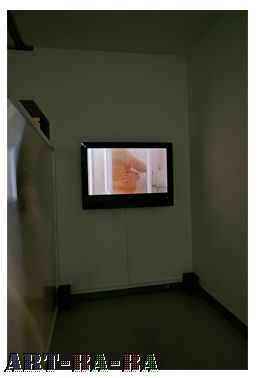
Tambourro, 2004 Video (On Show) 2"30"
肚皮彈撥,2004 录像(展场)2"30"


The tambour is a hand drum instrument found in the Middle-East. It is often played solo to show the performer’s dexterity in rhythm and speed. In Antar’s video Tambourro the skin of a male chest replaces the taught skin of the drum as a man slowly begins to slap his wet torso in the shower to produce a tempo. Antar stages this child-like and unpremeditated act in a place where even those of us who are not bestowed with any gift of sonority have the urge to sing arias. Instead of using the normal appropriate orifice to communicate the complex form of human speach, Antar opts for a voice that is pre-lingual, farcical and frail. He translates the body via a basic and internationally understood language to turn it into something that is gleefully incompetent.
彈撥鼓是一種中東的手持鼓類樂器,常以獨奏方式來表現表演者在節奏和速度靈巧的功力。在安塔的錄像作品〈肚皮彈撥〉中,拍打的不是鼓皮,而是男性的胸膛,我們看到一位男人在淋浴間拍著他濕淋淋的身體,打出節奏。在淋浴間這種即使不具音樂天份的人也敢放聲高歌的地方,安塔安排了這齣孩子氣又未經刻意安排的戲碼。安塔刻意不用嘴巴傳達人類語言的複雜形式,而選擇了這種在語言之前、滑稽而又難以捉摸的聲響,讓身體透過這種基本、全世界都了解的語言來發聲,雖然似乎有所不足,但又令人感到十分愉悅。

Bereft expo, Feb 2008
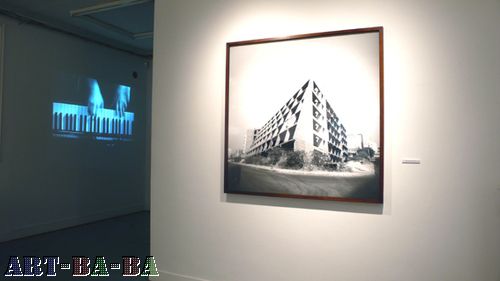
Bereft expo
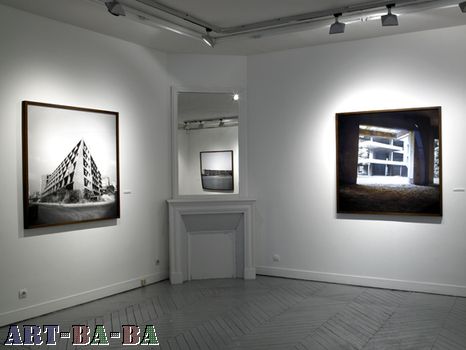
expo at Almine Rech Gallery, Feb 2008
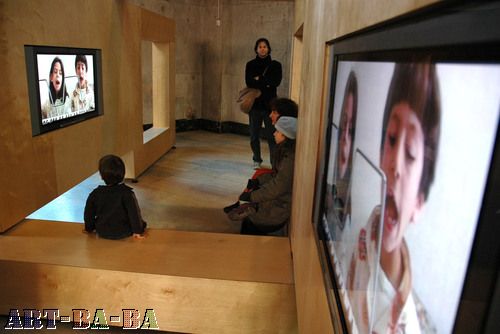
Palais de Tokyo, 2007

Terres de pomme de terre, 2009
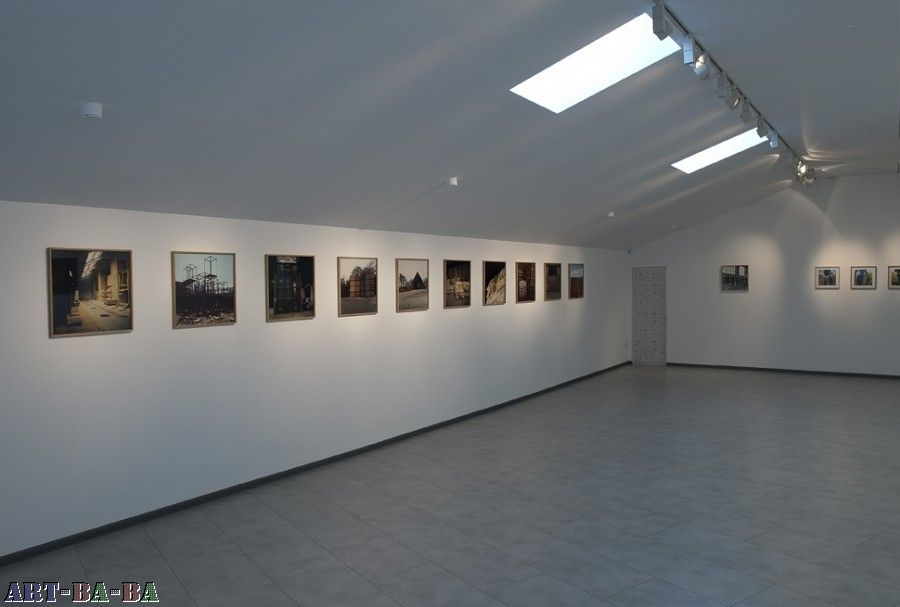


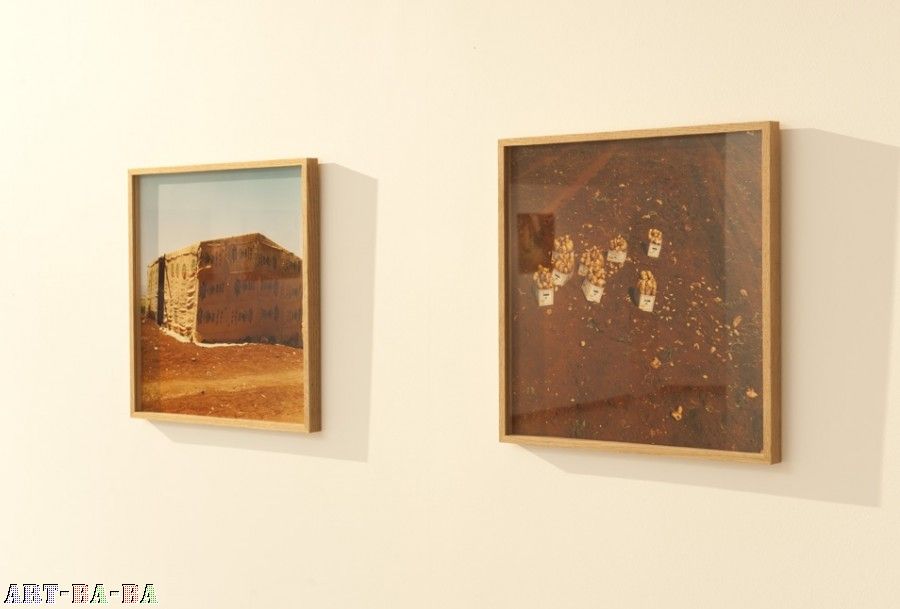
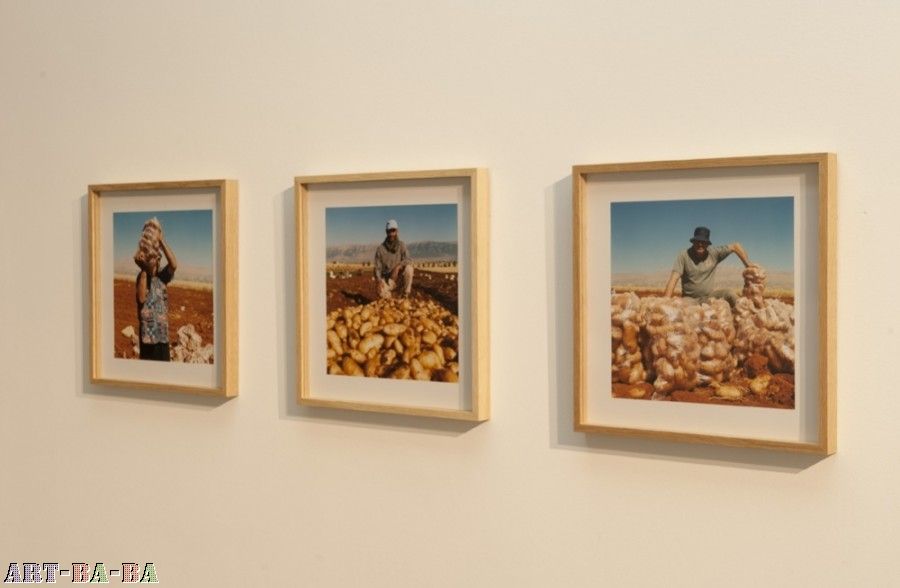
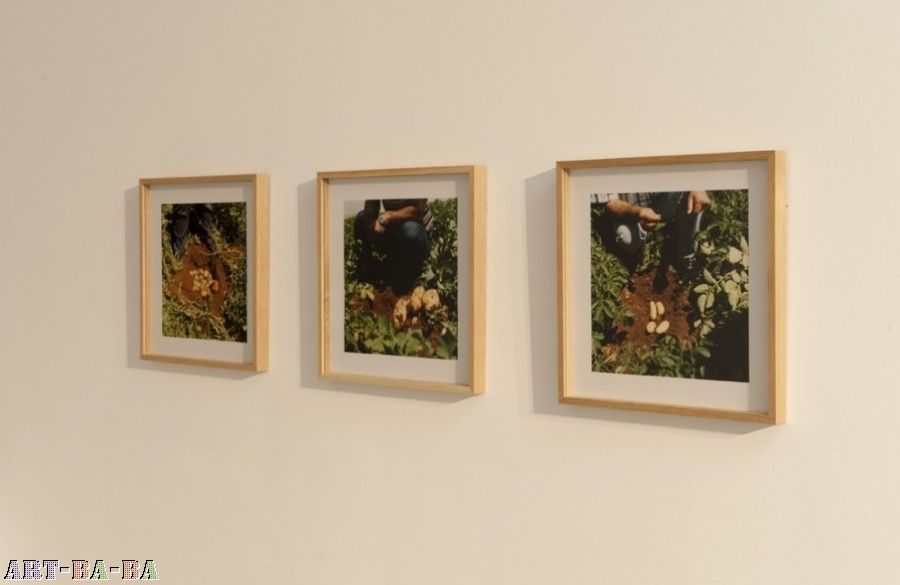
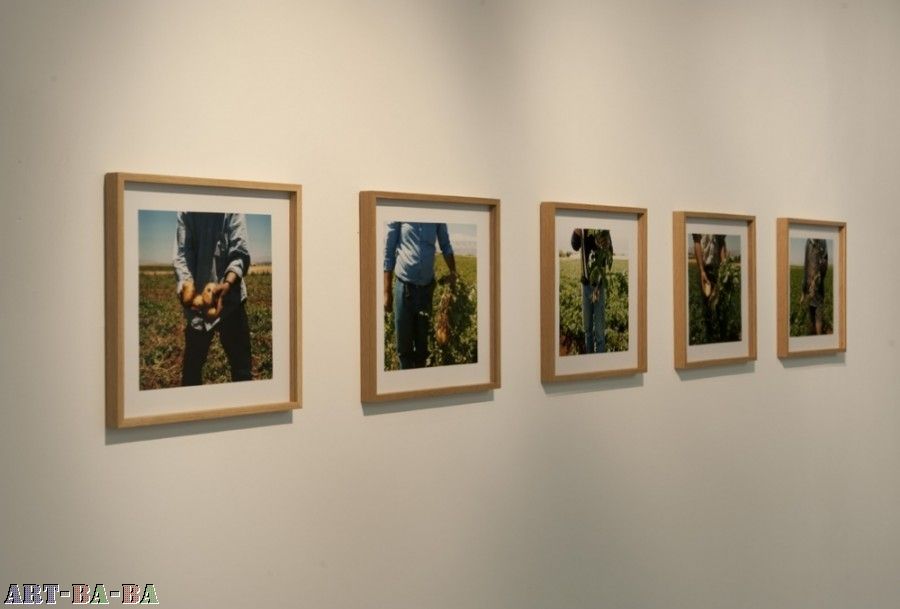
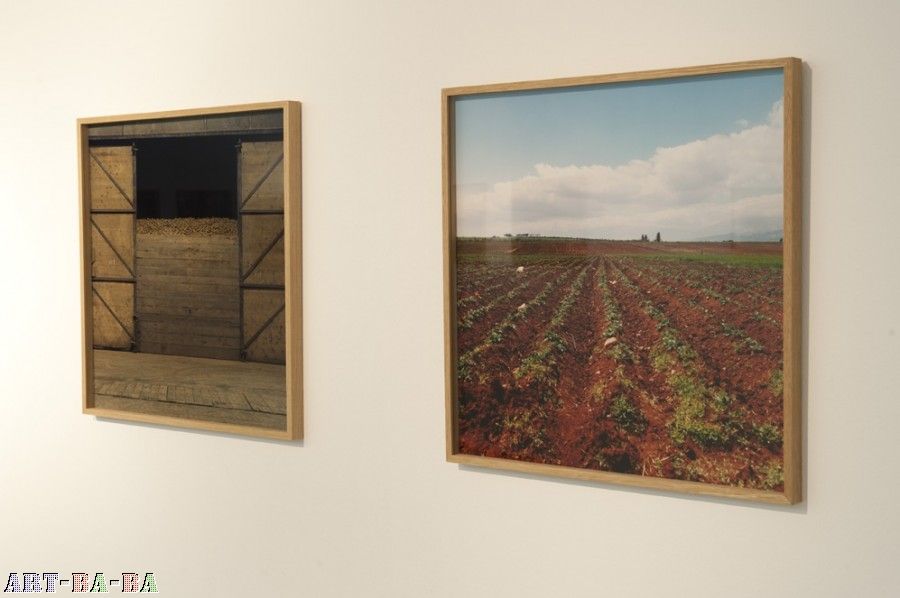

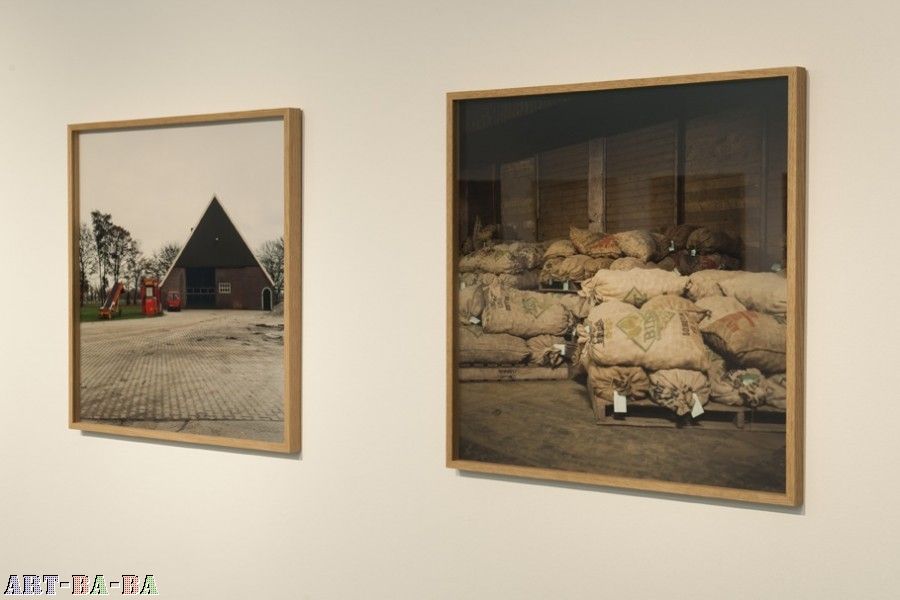

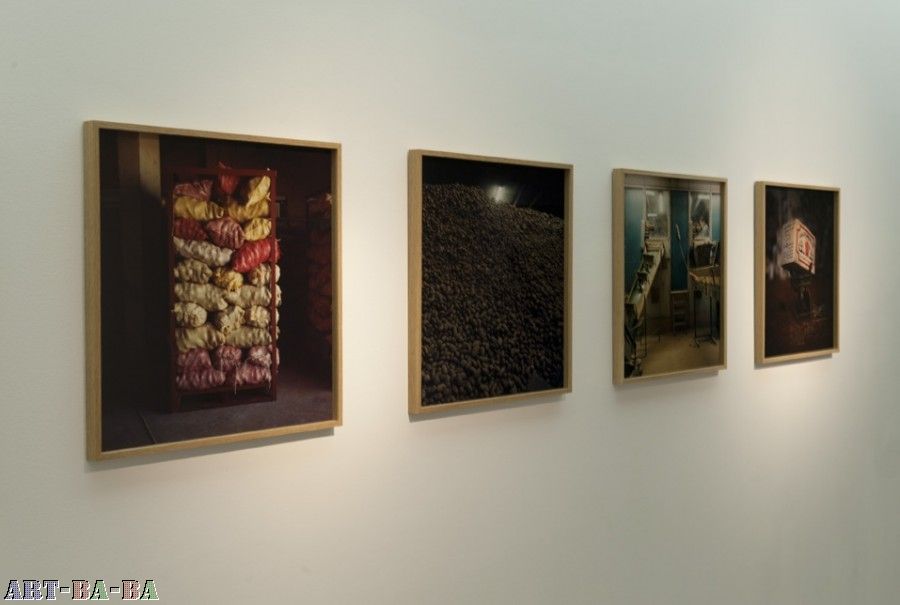
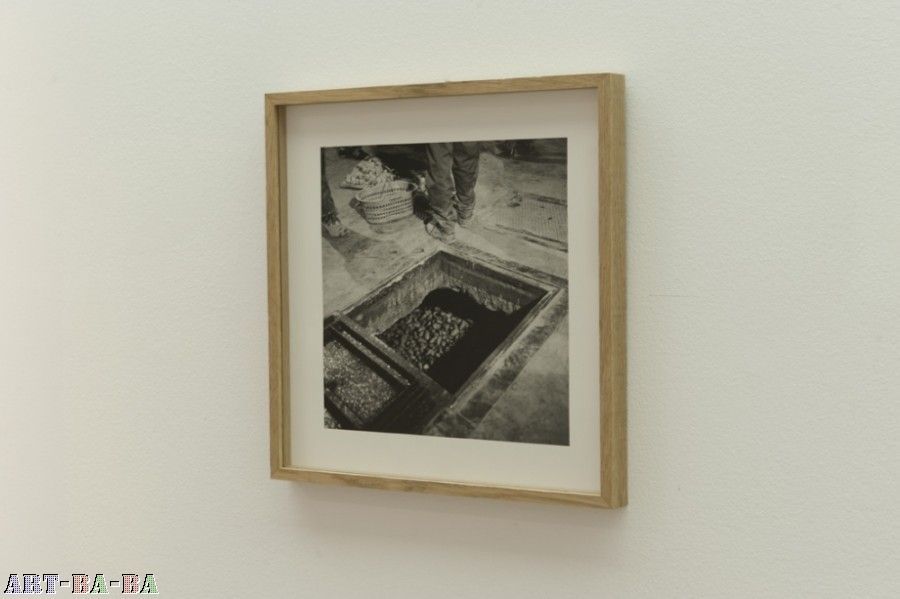

Banana, 2008 Film Still 40 seconds

Night of Love, 2008 Film Still 40 seconds
PREVIOUS EXHIBITIONS:
AYMAN YOSSRI: IDENTITY
21 JAN - 26 FEBRUARY 2011
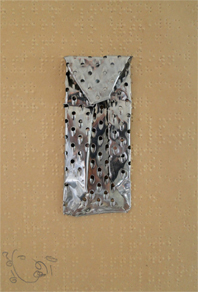
Braille Flag
2010
Mahd Series
Grater on Braille Paper
38.5 x 4 x 58.5 cm

White Buffalo
2010
Maharem Series
Print on Wooden Tissue Box
13 x 8 x 26 cm
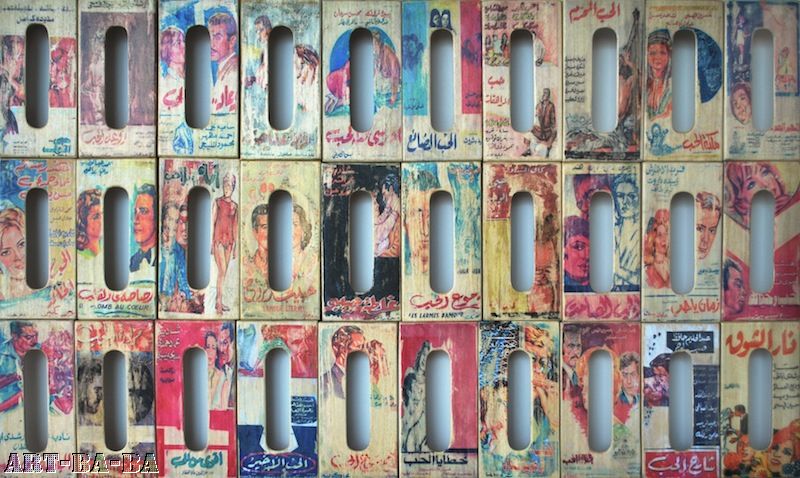
Love
2010
Maharem Series
Print on Wooden Tissue Boxes
135 x 9 x 78 cm
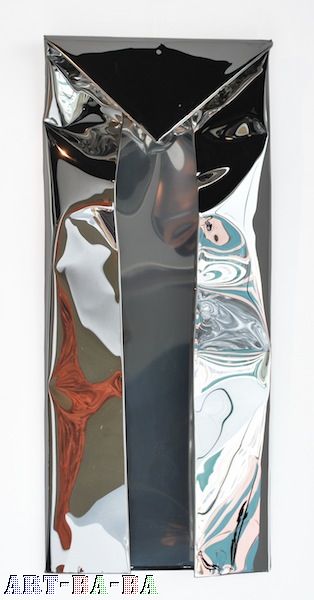
Mirror Flag
2010
Mahd Series
Stainless Steel
48.5 x 26 x 112 cm
CURRENT EXHIBITION:
ZIAD ANTAR: EXPIRED
04 MAR - 30 APRIL 2011

贝鲁特空虚了:被遗忘的建筑和废弃的地图 2009
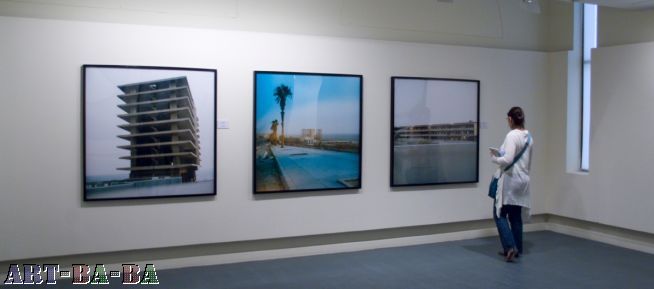
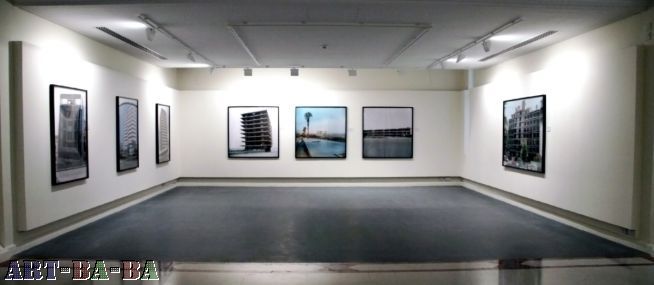
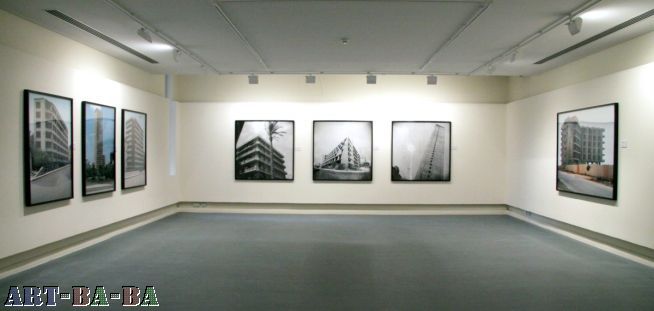
专访Ziad安塔尔
-有多久你一直住在法国?
-我搬到巴黎,并在2001年经常访问贝鲁特。 在某种程度上,我可以说我感到有一种归属感,令我想花更多的时间有驱动。 我被委托从2004年到2006年做一些纪录片,但我的主要做录像和摄影。
-How long have you been living in France?
-I moved to Paris in 2001 and have been visiting Beirut very regularly. In a way I could say I am driven by a sense of belonging which makes me want to spend more time there. I was commissioned to make some documentaries between 2004 and 2006, but my main practices have been video and photography
-在访问贝鲁特期间你做了哪种纪录片?
-它们主要是政治性的。
-What kind of documentaries have you made during your visits to Beirut?
-They are mainly political in nature.
-你的作品之间有什么样的关系?
-我不断遇到这对我的作品题材的问题。 我没有特定的主题,我主要关注的是视频媒体。 换句话说,我所感兴趣的视频为媒介,以及如何以生产为工作视频。 所以我的影片作品可以在任何给定的'主题',而在视频拍摄什么是他们的核心概念。 例如,一个人如何在一个序列,并拍摄一击影片吗? 我的影像作品不属于生产前研究项目成果的过程,涉及征求意见的方式转换成图像。 相反,他们是生产产品,工艺,每个工作是一个思想及其创作。
-What is the relationship that binds your works?
-I continuously come across this question about the subject matter of my works. I do not have a specific subject matter, my main concern is video, the medium. In other words, I am interested in video as a medium and how to produce video as work. So my video pieces can be on any given 'subject' while the shooting of the video is what is conceptually central to them. For instance, how does one shoot a video in one sequence and in one shot? My video works are not outcomes of pre-production processes involving researched projects seeking ways of translating ideas into images. Instead they are the product of production, of process, where each work is an idea and its creation.
-你们学过电影? 作为调查中的视频什么是您的利益?
-我研究电影2年多,但对于我参加的电影学院不满,他们并没有真正对录像艺术感兴趣。 然后我走进数字艺术。 从那以后,我在东京宫和巴黎美术学院做了一个居留项目,我在制做录像上有了想法。 我的第一个动力是做纪录片,但是因为很长时间的访谈我结束了拍摄电影。 与此同时,我发展我的录像作品。 我可以说,我觉得在视频里更自由。事实上我的录像作品开始被推广和法国机构一直支持我视频工作的选择。
-Did you study film? What is your interest in investigating video as medium?
-I did two years of cinema studies but was dissatisfied with the cinema school I attended, and they were not really interested in video art. I then went into digital art. After that I did a residency in Le Pavillion at Palais de Tokyo and École des Beaux Arts de Paris, where I developed my ideas on video making. My first drive was to make documentaries but I ended up shooting films as very long interviews. At the same time, I was developing my video work. I can say that I felt freer in video. The fact that my video works started to be promoted and in demand within French institutions has supported my choice of working with video.
-你现在在做项目吗?
-我现在做的项目里没有视频。
-Are you working on a project now?
-I am working on projects that are not within video.
-在录像艺术的历史中,我能想到的是那些被调查的录像和作为媒介电影的名单。一些艺术家们把自己限制在他们自己里,以生产他们的作品,和你制做录像的方式,在一个序列号,也是一个限定。
-我限制或约束是因为视频已经成为一种流行的媒介,每个人都被广泛使用相机。 这就需要引进不同类型的创意到这一媒介中。 这同样适用于摄影,但它们是两个不同的媒介,并有不同的现实和背景。 如果我们观察摄影历史,它开始作为一个非常专业和生产身份的私人手段。 之后大规模的在社会中试用,作为艺术摄影的讨论来的。 从这个意义上讲,我觉得视频也是在类似的轨道上。 因此,作为一个艺术家,我把自己的工作,因为限制而作出必要的或基本的条件 - 例如有一个照相机和电影 - 是不够的,开始一个创造性的过程。 这些限制,然而,实现这一目标。我拍了三分钟,最大和最小的有后期制作阶段。 这是因为,第一片和卢米埃尔兄弟,已经建立了一个胶卷两分半钟的长度和使用的摄影机。
-In the history of video art I can think of a long list of names that have investigated video and film as mediums. Some of those artists have placed restrictions on themselves in order to produce their work, and your way of making a video in one shot , in one sequence, is also a restriction.
-I place restrictions or constraints because video has become a popular medium that is widely used by everyone with a camera. This requires bringing in a different kind of creativity to this medium. The same applies to photography, though they are two different mediums and have differing realities and contexts. If we look into the history of photography, it started as a very professional and private means of production with an identity. After its mass use in society, the discussion of photography as art came about. In that sense, I think video is also on a similar track. Hence, as an artist, I place restrictions on myself while making work because the necessary or basic conditions - such as having a camera and a film - are not enough to start a creative process. The restrictions, however, bring this about. I shoot a maximum of three minutes and have a minimal post-production phase. This is as with the first films and cameras used by the Lumière brothers, which had a length of film rolls of two and a half minutes .
-你有参与过居留项目吗?
-在1999年和2000年我参加了一个由黎巴嫩电影和电影制片人阿克拉姆Zaatari和Mahmoud Hojeij题为交通视频研讨会在贝鲁特任教视频研讨会。 他们对我非常有影响力在我最后的实践中。 我目前正在做与沙迦艺术基金会的居留项目。
-Have you taken part in workshops or residencies?
-In 1999 and 2000 I attended a workshop on film and video taught by Lebanese filmmakers Akram Zaatari and Mahmoud Hojeij entitled Transit Video Workshop in Beirut. They were very influential to my later practice. I am currently doing a residency with the Sharjah Art Foundation.
-交通视频研讨会是什么样的?
-这次研讨会的形成是来自阿拉伯世界的艺术家,并且录像艺术放映组成。 除了知识性,理论部分,我们还传递相机做一分钟的录像。
-What was the Transit Video Workshop like?
-The workshop was formed of artists from the Arab world and was composed of screenings of video art. Beside the informative, theoretical part, we were also handed cameras to make one-minute videos.
-由此产生的电影工场有没有涉及后期制作?
-编辑是一个特殊的阶段,另一种创作形式。 正如我刚才所说,我宁愿做一个单次或一个场景的场景序列,连接了他们淡入和淡出,以及制定的标题和信贷。 例如, 东京今晚 (2003年)是由三个序列后,又增加了一个。 虽然我不反对编辑,但我比较喜欢用最少的编辑工具,把后期制做的处理变成一个简单的汇集一起的有背景工作的主体。
-Did the resulting workshop films involve post-production?
-Editing is a particular phase and another form of creation. As I have mentioned, I prefer to make a single shot of a scene or a sequence of scenes, connecting them with a fade in and fade out, and framing them with the title and credits . For instance, Tokyo Tonight (2003) is composed of three sequences added one after another. I am not against editing although I prefer to use minimal editing tools where the process of post-production becomes a simple act of bringing together the main body of work with its frame.
-您的视频作品各有不同的主题。 对我来说,它感觉像是你在熟悉着处理,犹如在烹调小扁豆中Mdardara菜(2007年),如同在熟悉的环境下一个陌生的感觉,例如东京之夜(2003)。
-你有一个观点,特别是随着熟悉的概念。 我做了大约十五个影片,他们都与我周围发生过的事情有关。 在西澳 (2004年)我拍我的侄女和侄子唱歌。 首先我主要是拍一些和我周围有关的,同时尝试着说明我所熟悉的东西。 我也喜欢选择做限制低的作品,在这个意义上我的作品需要一个非常低的生产预算。 你可以以某种方式和arte povera联系起来。 而这方面是一个优势,当从制作公司申请获得资金或项目的支持。 正如你可能已经猜到,要求一个1000欧元的录像作品制作费比15,000更容易。其中的一个原因事我在小规模的制做工作,也是由于他们的管理。
-Your video works vary in their subject matter. For me, it feels like you are dealing with familiarities such as cooking a lentil dish in Mdardara (2007), as well as a feeling of strangeness in familiar surroundings, such as Tokyo Tonight (2003) .
-You have a point, especially with the concept of the familiar. I've made around fifteen videos and they have all related to things I have experienced around me. In WA (2004) I filmed my niece and nephew singing. I work with my surroundings first and foremost, and try to translate what I am familiar with. I also enjoy and choose to work with the minimum, in the sense that my productions require a very low production budget. You could relate this to Arte Povera somehow. And this aspect is an advantage when applying for funding from production houses or in getting support for projects. As you might guess, asking for 1,000 Euros for a video work is easier than 15,000. One of the reasons I work on small scale productions is also due to their manageability.
-你如何看待自己在国际舞台上?
-我尽量避免国际艺术市场围绕身份的讨论而尝试保持自我的实践,或对来自“新兴”国家的一些艺术家感兴趣。 我的兴趣是如何继续做录像工作,我的主题和从“发展中”的国家的新兴话题没有直接关系。
-How do you perceive yourself in the international arena?
-I try to keep my practice away from discussions within the international art market around identity, or interest in artists from "emerging" countries. My interest is how to continue working with video, and my subject matter is not directly related to the usual topics emerging from 'developing' countries.
-让我们专注于你的录像作品, 陆地德波姆代特雷 (2009),一部你最近在巴黎galerie almine rech画廊展出个展的部分作品。 这件作品描绘了熟悉的物体,同时组成了一个奇怪的关系,即土豆,旁边一个奇怪的关系组成该对象,即利用土豆作为健身工具而不是作为一个食品。 你能谈谈两个方面合并的工作吗?
-我试图在这里做一个小小的尝试。 它涉及的是土豆的照片前系列(在运输,储存,种植等不同阶段),在欧洲的一个土豆的贸易文件的形式从一个洲到另一个经济和政治关系这将产生(在这个意义上,在黎巴嫩种植马铃薯来从荷兰购买的种子,例如)。 该摄影项目接手五年过程中发生的,而我是北欧和黎巴嫩之间旅行的。 在那个系列中录像作品是从一个照片开始的。 这是一个8毫米胶片拍摄的,并强调工作中的土豆大多是由家庭和亲属耕地的事实。 因此,他们的耕作是通过一个可靠的人,一个家庭成员组成的。 使用8毫米电影,我想反映的记忆概念和具有特殊意义的(家庭,本质的)工作/一起生产的。
-Let us focus on one of your video works, Terres de Pomme de Terre (2009), which formed part of your recent solo show at the Galerie Almine Rech in Paris. This piece depicts familiar objects, namely potatoes, alongside a composition of strange relations to that object, namely using the potato as a body building tool rather than a food product. Can you say more about the merging of these two aspects within the work?
-What I tried do in this piece was a little new. It's related to a former series of photographs of potatoes (in different stages of transport, storage, planting, etc.) In Europe in the form of a documentation of the trade of potatoes from one continent to another and the economic and political relationships this produces (in the sense that potatoes grown in Lebanon came from seeds bought from the Netherlands, for example). The photography project took place over the course of five years while I was travelling between Northern Europe and Lebanon. The video piece started from a single photograph in that series. It was shot with an 8mm film, and the medium worked to underline the fact that potatoes are mostly cultivated by families and relatives. Hence their farming is done by a close group of people that are members of a family. By using 8mm film, I wanted to reflect on the notion of memory and the significant (familial, constitutive) act of working / producing together.
-在陆地德波姆代特雷的健美运动员,在这里他们是什么关系?
-每件你需要有某种形式的保证金。 我想这是我的倾向,通过个人解构游戏,导致其性质发生了变化的纪实风格。 换句话说,拍摄自己的马铃薯种植,农民的辛勤劳动与此相关,图像等,将是一个单纯的纪录片。 我想打破一见钟情无关的东西。这种明显的不相关也涉及回到一个事实,即生产食品,其消费的基本手段是不同的。 劳动是非常社会和体现的,这是不同因食用炸薯条。 我的方法来证明这种差异是健美运动员训练用的土豆。
-What about the bodybuilders in Terres de Pomme de Terre, what is their relation to this context?
-For each piece you need to have a margin of some sort. I think it is my tendency to deconstruct the documentary style through a personal game that causes a shift in its nature. In other words, filming images of potato farming, farmers, the hard labour associated with it, and so forth, on their own would have been a mere documentary. I wanted to break this with something irrelevant at first sight. This apparent irrelevance also relates back to the fact that the basic means of producing food and its consumption are distinct. Labour is something that is very social and embodied, and this is different from consuming French fries. My approach to this difference is to show bodybuilders using potatoes for their training.
-在这个意义上,我们可以谈论的力量和机构,电力政策...
-农业和农业企业,有时可超过银行赢利! 我作为一名农业研究,并在贝鲁特美国大学受培训的工程师。 我个人认为,在农业的力量。 在我的研究后,我曾在田里工作,也为阿克拉姆Zaatari工作,在他的一部摄影和录像项目里做助理工作。
-In that sense, we can talk about power and the agencies, policies of power ...
-The business of agriculture and farming sometimes can be more profitable than banking! I studied and trained as an agricultural engineer at the American University of Beirut. I also personally believe in the power of agriculture. After my studies, I worked in the fields, as well as working as Akram Zaatari's assistant on a number of his photography and video projects.
-你什么时候开始对艺术产生兴趣的?
-一开始我感兴趣的是录像。 我家有一高8摄像头,但是当我年轻,没有对艺术的兴趣,并不了解不多。 在我研究工程之前,我已申请了艺术系。 因此,我真正开始参与时我还在学习,是通过我的研究生助教奖学金开始做视频制作和电影制作。 这就是我如何参与了阿拉伯形象建设和会见了吕克moulene,在黎巴嫩的居留项目里。对我来说那是一次有意义的邂逅。
-How did you grow interested in art to begin with?
-In the beginning I was interested in video. My family had a high-8 camera, but when I was young I did not have artistic interest and did not know much about it. Before my studies in engineering, I had applied to the arts department . Hence, my real involvement started when I was still studying, through my assistantships with a number of videomakers and filmmakers. That is how I got involved with the Arab Image Foundation and met Jean-Luc Moulene during his residency in Lebanon. That was quite a significant encounter for me.
-你和这图像是什么关系,对你来说什么是你的形象?
-一个形象是一个想法。
-What is your relationship to image, what is an image for you?
-An image is an idea.
海岸线
Ziad安塔尔
居留项目 2010年10月1日 - 2011年2月28日
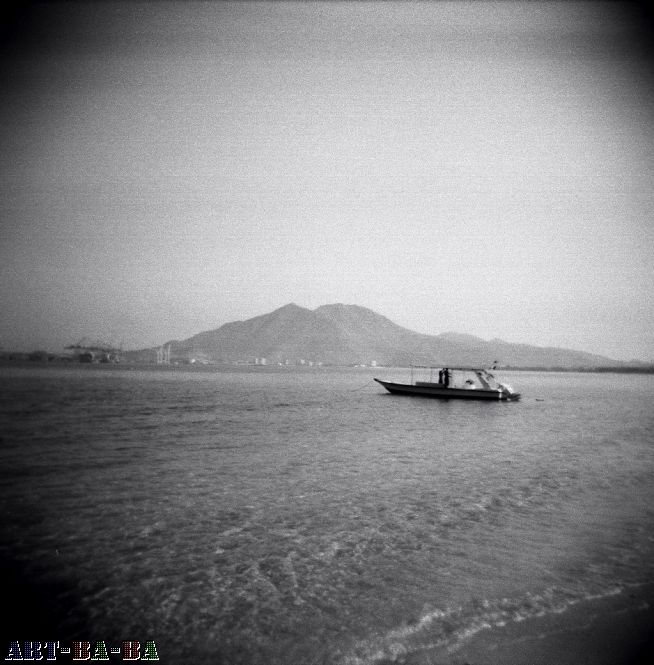
沙迦艺术基金会
海岸线是一个摄影项目,将文件的阿联酋海岸线的整个周长。 这是一个对社会历史调查和阿联酋的政治经济,但在走向未来的愿景也。
从不起眼的百年老船小海交易到了大量的建设项目的艺术状态,阿联酋的海岸线,不仅是路线图,其激进的变革,也是一个不断变化的关系,海的反映。 原来是一个以经济,贸易,生活和连接世界的境界,也成为该国的展示其在该地区的新角色累计权力和野心,首要的前沿。
我在阿联酋的拍摄产生浓厚的兴趣,在我第一次访问沙迦,在2009年的两年期场合。 该港口是极富吸引力的,我发现自己在短短几天内,醒来黎明即起,赶上第一班晨光和最早的活动。 当我驱车前往迪拜等地,在设计,使用和日常生活的海岸线的变化都是很吸引人的。 不久,作为'内陆'的每一个地方变得更加熟悉,我意识到在何种程度上载有海岸线的复杂,多层次的历史不成文的地图和阿联酋人类学,以及它如何塑造自己的未来和Outlook世界。
对于跨六个星期,我计划在整个流通的海岸线,在不同的时间,花时间观察一切形式的活动,并解开丢失或隐藏的意义,真理和秘密。
2010

Ziad Antar was born 1978 in Saida, Lebanon. He currently lives and works in Paris and Beirut. After receiving a degree in agricultural engineering in 2001, he began working with photography and video. In 2002 Antar directed his first documentary on the French photographer Jean-Luc Moulene and he has since filmed several documentaries for the Arabic news station al-Arabiya. Without becoming overtly political, Antar often investigates a world marked by war and violence.
Ziad安塔尔出生在赛伊达,于黎巴嫩1978年。他目前生活和工作都在巴黎和贝鲁特。在2001年获得农业工程学位后,他开始做摄影和录像工作。在2002年安塔尔在法国摄影师Jean-LucMoulene的纪录片里执导了他的第一部纪录片,从那时起他拍摄了阿拉伯语新闻电视台的阿拉伯纪录片。没有成为公开的政治,安塔尔经常调查一个充斥着战争和暴力的世界。
Group Shows
群展
2010
-21 Shortlisted Artists of the Future Generation Art Prize Group Exhibition - PinchukArtCentre, Kiev
-SPAPORT BIENALE 2009/2010 Banja Luka - Spaport Biennial, Banja Luka
-Nulle part est un endroit - Centre photographique d’Ile-de-France, Pontault Combault
-Live Cinema/In the Round: Contemporary Art from the East Mediterranean - Philadelphia Museum of Art, Philadelphia, PA
-The 6th Seoul International Biennale of Media Art - Media City Seoul - International Biennale of Media Art, Seoul
-Who Wants to Act Now, or Even See Acting - Depo, Istanbul
-Morality ACT VI: Remember Humanity - Witte de With Center for Contemporary Art, Rotterdam
-Morality ACT V: Power Alone - Witte de With Center for Contemporary Art, Rotterdam
-Suspended Spaces #1 From Famagusta - Maison de la Culture d'Amiens, Amiens
2009
-Black Little Curly Hair - Kappatos Gallery, Athens
-America - Beirut Art Center, Beirut
-5x5CASTELLÓ09 Premi Internacional d’Art Contemporani Diputació de Castelló - EACC - Espai d´Art Contemporani de Castelló, Castellon de la Plana
-Pas nécessaire et pourtant indispensable. 1979-2009 : 30 ans d’art contemporain à Meymac - Abbaye St André - Centre d’art contemporain, Meymac
-Breakfast of Champions - Guest Projects, London (England)
-The Generational: Younger Than Jesus - New Museum of Contemporary Art, New York City, NY
2008
-Taipei Biennial 2008 - Taipei Biennial, Taipei
-Summer Screen - Spacex, Exeter (England)
-New Ends, Old Beginnings - Open Eye Gallery, Edinburgh (Scotland)
-New Ends, Old Beginnings - Bluecoat Gallery, Liverpool (England)
-Lieux de vie - Mémoire et phantasme de l’enracinement - Abbaye St André - Centre d’art contemporain, Meymac
-International Triennale of Contemporary Art - Re-Reading the Future - International Triennale of Contemporary Art (ITCA), Prague
-HOMEWORKS IV - Galerie Sfeir-Semler - Beirut, Beirut
-Art Now in Lebanon - Darat al Funum, Amman
-Ange Leccia - Ziad Antar - Galerie Almine Rech - Paris, Paris
2007
-12th Biennial of Moving Images - International Competition - Biennial of Moving Images, Geneva
2006
-Pawel Althamer - Centre Pompidou - Musée National d´Art Moderne, Paris
-La Cabane - Palais de Tokyo, Paris
2004
-Parking - CAC - Centre d´art contemporain de Brétigny, Brétigny s/Orge

Products of War
2006 C-prints mounted on aluminum dlbond 49 x 72 cm
Products of War is a series of photographs that record the actuality of everyday life in a war situation by taking stock of basic items that are integral to survival. Antar collected these products both during and in the aftermath of the 2006 war; they include cans of vegetarian spread left over by Israeli soldiers, which the artist found in the southern town of Ayta El Chaab on the day the war ended.

Veil Series
2007 C-prints mounted on aluminum dlbond 32 x 50 cm
Veil Series touches on the recent phenomenon of religious radicalism and the surge in the popularity of the headscarf or veil. Ziad Antar spent a month working on an art project with young girls from the Ein al-Hilw camp near Saida. The girls were asked to bring headscarves with them from their homes and to create any shape they desired using them. Veil Series is a photographic expos of the end products of this art venture.

UN Tank
2006 C-prints mounted on aluminum dlbond 78 x 119 cm
This photograph of a UN tank that is parked at a perfect viewpoint in front of a picturesque countryside which is untainted by signs of destruction leads the viewer to question the tank's role.

Wa, 2004 Video (On Show) 1"56" Taipei Biennial 2008
哇,2004 录像(展场)1"56"

In Wa, a boy and a girl sing along to a synthesiser drum beat in flawless harmony. They demonstrate a cool and nonchalant style of performance normally reserved for adults. In the beginning their act is funny and endearing, but as the song progresses, one is captivated by their simple and straightforward delivery. It does not matter if the kids are related to the artist or if he encountered them somewhere by chance, it is about how they perform a role in this setup as children. We cannot know if it is a farce or a documentary, but we immediately become part of the game, develop an affinity, cracking up and leveling with the protagonists.
彈撥鼓是一種中東的手持鼓類樂器,常以獨奏方式來表現表演者在節奏和速度靈巧的功力。在安塔的錄像作品〈肚皮彈撥〉中,拍打的不是鼓皮,而是男性的胸膛,我們看到一位男人在淋浴間拍著他濕淋淋的身體,打出節奏。在淋浴間這種即使不具音樂天份的人也敢放聲高歌的地方,安塔安排了這齣孩子氣又未經刻意安排的戲碼。安塔刻意不用嘴巴傳達人類語言的複雜形式,而選擇了這種在語言之前、滑稽而又難以捉摸的聲響,讓身體透過這種基本、全世界都了解的語言來發聲,雖然似乎有所不足,但又令人感到十分愉悅。

Tokyo Tonight, 2003 Viedo (On Show) 2"45"
东京之夜,2003 录像(展场)2"45"



In Tokyo Tonight, a number of farmers are seen tending their sheep in the empty and depopulated meadows of the countryside. Then, as the men approach the camera, shifting from their daily routine to a moment of recognition and perhaps a few seconds of fame, out of the blue each one simply says ‘Tokyo’. They have of course been instructed by the artist to utter this total absurdity, because Tokyo is nowhere in sight. The landscape is generic of the dry rural plateaus of the South East Mediterranean, and probably the farthest thing imaginable from the overpoweringly dense, high adrenalin bustle of the city of Tokyo. The viewer can laugh, but the joke is private to Antar and the men, which has the effect of similarly isolating the audience. The shift in each character’s involvement with the camera from one who is being documented to the position of actor, also confuses the roles of all those involved, including ourselves. And, while the men say ‘Tokyo’ it does not suggest any craving on their part to go there, or even an interest in its significance. Tokyo, becomes a script repeated ad infinitum, full of association while at the same time vacuous and remote.
在〈東京之夜〉作品中,一群農夫在鄉間空曠無人的草地上牧羊。隨著農夫靠近鏡頭,忽然他們跳離了日常生活,彷彿靈光一現,每個人說著「Tokyo」(東京),但其實東京還在千里之遙。當然,這是在藝術家的指示之下,才會有這種完全不合理的話語。整個景觀是典型的地中海東南方乾燥的鄉村高原,與人口超級密集、令人腎上腺素升高的東京市形成可能是最強烈的對比。觀眾可能會發笑,但這個笑話其實是安塔和這些農夫之間的小秘密,將觀眾孤立在外。他們在鏡頭下的角色從被記錄的對象轉換成為演員,對所有相關的人形成混淆的效果,包括他們自己。同時,他們說「Tokyo」的時候,並不代表他們想去東京,甚至不代表他們對東京有任何興趣。「東京」成為無限重覆的劇本,雖然帶來無限聯想,但同時卻也虛無飄渺、遙不可及。

Tambourro, 2004 Video (On Show) 2"30"
肚皮彈撥,2004 录像(展场)2"30"


The tambour is a hand drum instrument found in the Middle-East. It is often played solo to show the performer’s dexterity in rhythm and speed. In Antar’s video Tambourro the skin of a male chest replaces the taught skin of the drum as a man slowly begins to slap his wet torso in the shower to produce a tempo. Antar stages this child-like and unpremeditated act in a place where even those of us who are not bestowed with any gift of sonority have the urge to sing arias. Instead of using the normal appropriate orifice to communicate the complex form of human speach, Antar opts for a voice that is pre-lingual, farcical and frail. He translates the body via a basic and internationally understood language to turn it into something that is gleefully incompetent.
彈撥鼓是一種中東的手持鼓類樂器,常以獨奏方式來表現表演者在節奏和速度靈巧的功力。在安塔的錄像作品〈肚皮彈撥〉中,拍打的不是鼓皮,而是男性的胸膛,我們看到一位男人在淋浴間拍著他濕淋淋的身體,打出節奏。在淋浴間這種即使不具音樂天份的人也敢放聲高歌的地方,安塔安排了這齣孩子氣又未經刻意安排的戲碼。安塔刻意不用嘴巴傳達人類語言的複雜形式,而選擇了這種在語言之前、滑稽而又難以捉摸的聲響,讓身體透過這種基本、全世界都了解的語言來發聲,雖然似乎有所不足,但又令人感到十分愉悅。

Bereft expo, Feb 2008

Bereft expo

expo at Almine Rech Gallery, Feb 2008

Palais de Tokyo, 2007

Terres de pomme de terre, 2009














Banana, 2008 Film Still 40 seconds

Night of Love, 2008 Film Still 40 seconds
PREVIOUS EXHIBITIONS:
AYMAN YOSSRI: IDENTITY
21 JAN - 26 FEBRUARY 2011

Braille Flag
2010
Mahd Series
Grater on Braille Paper
38.5 x 4 x 58.5 cm

White Buffalo
2010
Maharem Series
Print on Wooden Tissue Box
13 x 8 x 26 cm

Love
2010
Maharem Series
Print on Wooden Tissue Boxes
135 x 9 x 78 cm

Mirror Flag
2010
Mahd Series
Stainless Steel
48.5 x 26 x 112 cm
CURRENT EXHIBITION:
ZIAD ANTAR: EXPIRED
04 MAR - 30 APRIL 2011

贝鲁特空虚了:被遗忘的建筑和废弃的地图 2009



专访Ziad安塔尔
-有多久你一直住在法国?
-我搬到巴黎,并在2001年经常访问贝鲁特。 在某种程度上,我可以说我感到有一种归属感,令我想花更多的时间有驱动。 我被委托从2004年到2006年做一些纪录片,但我的主要做录像和摄影。
-How long have you been living in France?
-I moved to Paris in 2001 and have been visiting Beirut very regularly. In a way I could say I am driven by a sense of belonging which makes me want to spend more time there. I was commissioned to make some documentaries between 2004 and 2006, but my main practices have been video and photography
-在访问贝鲁特期间你做了哪种纪录片?
-它们主要是政治性的。
-What kind of documentaries have you made during your visits to Beirut?
-They are mainly political in nature.
-你的作品之间有什么样的关系?
-我不断遇到这对我的作品题材的问题。 我没有特定的主题,我主要关注的是视频媒体。 换句话说,我所感兴趣的视频为媒介,以及如何以生产为工作视频。 所以我的影片作品可以在任何给定的'主题',而在视频拍摄什么是他们的核心概念。 例如,一个人如何在一个序列,并拍摄一击影片吗? 我的影像作品不属于生产前研究项目成果的过程,涉及征求意见的方式转换成图像。 相反,他们是生产产品,工艺,每个工作是一个思想及其创作。
-What is the relationship that binds your works?
-I continuously come across this question about the subject matter of my works. I do not have a specific subject matter, my main concern is video, the medium. In other words, I am interested in video as a medium and how to produce video as work. So my video pieces can be on any given 'subject' while the shooting of the video is what is conceptually central to them. For instance, how does one shoot a video in one sequence and in one shot? My video works are not outcomes of pre-production processes involving researched projects seeking ways of translating ideas into images. Instead they are the product of production, of process, where each work is an idea and its creation.
-你们学过电影? 作为调查中的视频什么是您的利益?
-我研究电影2年多,但对于我参加的电影学院不满,他们并没有真正对录像艺术感兴趣。 然后我走进数字艺术。 从那以后,我在东京宫和巴黎美术学院做了一个居留项目,我在制做录像上有了想法。 我的第一个动力是做纪录片,但是因为很长时间的访谈我结束了拍摄电影。 与此同时,我发展我的录像作品。 我可以说,我觉得在视频里更自由。事实上我的录像作品开始被推广和法国机构一直支持我视频工作的选择。
-Did you study film? What is your interest in investigating video as medium?
-I did two years of cinema studies but was dissatisfied with the cinema school I attended, and they were not really interested in video art. I then went into digital art. After that I did a residency in Le Pavillion at Palais de Tokyo and École des Beaux Arts de Paris, where I developed my ideas on video making. My first drive was to make documentaries but I ended up shooting films as very long interviews. At the same time, I was developing my video work. I can say that I felt freer in video. The fact that my video works started to be promoted and in demand within French institutions has supported my choice of working with video.
-你现在在做项目吗?
-我现在做的项目里没有视频。
-Are you working on a project now?
-I am working on projects that are not within video.
-在录像艺术的历史中,我能想到的是那些被调查的录像和作为媒介电影的名单。一些艺术家们把自己限制在他们自己里,以生产他们的作品,和你制做录像的方式,在一个序列号,也是一个限定。
-我限制或约束是因为视频已经成为一种流行的媒介,每个人都被广泛使用相机。 这就需要引进不同类型的创意到这一媒介中。 这同样适用于摄影,但它们是两个不同的媒介,并有不同的现实和背景。 如果我们观察摄影历史,它开始作为一个非常专业和生产身份的私人手段。 之后大规模的在社会中试用,作为艺术摄影的讨论来的。 从这个意义上讲,我觉得视频也是在类似的轨道上。 因此,作为一个艺术家,我把自己的工作,因为限制而作出必要的或基本的条件 - 例如有一个照相机和电影 - 是不够的,开始一个创造性的过程。 这些限制,然而,实现这一目标。我拍了三分钟,最大和最小的有后期制作阶段。 这是因为,第一片和卢米埃尔兄弟,已经建立了一个胶卷两分半钟的长度和使用的摄影机。
-In the history of video art I can think of a long list of names that have investigated video and film as mediums. Some of those artists have placed restrictions on themselves in order to produce their work, and your way of making a video in one shot , in one sequence, is also a restriction.
-I place restrictions or constraints because video has become a popular medium that is widely used by everyone with a camera. This requires bringing in a different kind of creativity to this medium. The same applies to photography, though they are two different mediums and have differing realities and contexts. If we look into the history of photography, it started as a very professional and private means of production with an identity. After its mass use in society, the discussion of photography as art came about. In that sense, I think video is also on a similar track. Hence, as an artist, I place restrictions on myself while making work because the necessary or basic conditions - such as having a camera and a film - are not enough to start a creative process. The restrictions, however, bring this about. I shoot a maximum of three minutes and have a minimal post-production phase. This is as with the first films and cameras used by the Lumière brothers, which had a length of film rolls of two and a half minutes .
-你有参与过居留项目吗?
-在1999年和2000年我参加了一个由黎巴嫩电影和电影制片人阿克拉姆Zaatari和Mahmoud Hojeij题为交通视频研讨会在贝鲁特任教视频研讨会。 他们对我非常有影响力在我最后的实践中。 我目前正在做与沙迦艺术基金会的居留项目。
-Have you taken part in workshops or residencies?
-In 1999 and 2000 I attended a workshop on film and video taught by Lebanese filmmakers Akram Zaatari and Mahmoud Hojeij entitled Transit Video Workshop in Beirut. They were very influential to my later practice. I am currently doing a residency with the Sharjah Art Foundation.
-交通视频研讨会是什么样的?
-这次研讨会的形成是来自阿拉伯世界的艺术家,并且录像艺术放映组成。 除了知识性,理论部分,我们还传递相机做一分钟的录像。
-What was the Transit Video Workshop like?
-The workshop was formed of artists from the Arab world and was composed of screenings of video art. Beside the informative, theoretical part, we were also handed cameras to make one-minute videos.
-由此产生的电影工场有没有涉及后期制作?
-编辑是一个特殊的阶段,另一种创作形式。 正如我刚才所说,我宁愿做一个单次或一个场景的场景序列,连接了他们淡入和淡出,以及制定的标题和信贷。 例如, 东京今晚 (2003年)是由三个序列后,又增加了一个。 虽然我不反对编辑,但我比较喜欢用最少的编辑工具,把后期制做的处理变成一个简单的汇集一起的有背景工作的主体。
-Did the resulting workshop films involve post-production?
-Editing is a particular phase and another form of creation. As I have mentioned, I prefer to make a single shot of a scene or a sequence of scenes, connecting them with a fade in and fade out, and framing them with the title and credits . For instance, Tokyo Tonight (2003) is composed of three sequences added one after another. I am not against editing although I prefer to use minimal editing tools where the process of post-production becomes a simple act of bringing together the main body of work with its frame.
-您的视频作品各有不同的主题。 对我来说,它感觉像是你在熟悉着处理,犹如在烹调小扁豆中Mdardara菜(2007年),如同在熟悉的环境下一个陌生的感觉,例如东京之夜(2003)。
-你有一个观点,特别是随着熟悉的概念。 我做了大约十五个影片,他们都与我周围发生过的事情有关。 在西澳 (2004年)我拍我的侄女和侄子唱歌。 首先我主要是拍一些和我周围有关的,同时尝试着说明我所熟悉的东西。 我也喜欢选择做限制低的作品,在这个意义上我的作品需要一个非常低的生产预算。 你可以以某种方式和arte povera联系起来。 而这方面是一个优势,当从制作公司申请获得资金或项目的支持。 正如你可能已经猜到,要求一个1000欧元的录像作品制作费比15,000更容易。其中的一个原因事我在小规模的制做工作,也是由于他们的管理。
-Your video works vary in their subject matter. For me, it feels like you are dealing with familiarities such as cooking a lentil dish in Mdardara (2007), as well as a feeling of strangeness in familiar surroundings, such as Tokyo Tonight (2003) .
-You have a point, especially with the concept of the familiar. I've made around fifteen videos and they have all related to things I have experienced around me. In WA (2004) I filmed my niece and nephew singing. I work with my surroundings first and foremost, and try to translate what I am familiar with. I also enjoy and choose to work with the minimum, in the sense that my productions require a very low production budget. You could relate this to Arte Povera somehow. And this aspect is an advantage when applying for funding from production houses or in getting support for projects. As you might guess, asking for 1,000 Euros for a video work is easier than 15,000. One of the reasons I work on small scale productions is also due to their manageability.
-你如何看待自己在国际舞台上?
-我尽量避免国际艺术市场围绕身份的讨论而尝试保持自我的实践,或对来自“新兴”国家的一些艺术家感兴趣。 我的兴趣是如何继续做录像工作,我的主题和从“发展中”的国家的新兴话题没有直接关系。
-How do you perceive yourself in the international arena?
-I try to keep my practice away from discussions within the international art market around identity, or interest in artists from "emerging" countries. My interest is how to continue working with video, and my subject matter is not directly related to the usual topics emerging from 'developing' countries.
-让我们专注于你的录像作品, 陆地德波姆代特雷 (2009),一部你最近在巴黎galerie almine rech画廊展出个展的部分作品。 这件作品描绘了熟悉的物体,同时组成了一个奇怪的关系,即土豆,旁边一个奇怪的关系组成该对象,即利用土豆作为健身工具而不是作为一个食品。 你能谈谈两个方面合并的工作吗?
-我试图在这里做一个小小的尝试。 它涉及的是土豆的照片前系列(在运输,储存,种植等不同阶段),在欧洲的一个土豆的贸易文件的形式从一个洲到另一个经济和政治关系这将产生(在这个意义上,在黎巴嫩种植马铃薯来从荷兰购买的种子,例如)。 该摄影项目接手五年过程中发生的,而我是北欧和黎巴嫩之间旅行的。 在那个系列中录像作品是从一个照片开始的。 这是一个8毫米胶片拍摄的,并强调工作中的土豆大多是由家庭和亲属耕地的事实。 因此,他们的耕作是通过一个可靠的人,一个家庭成员组成的。 使用8毫米电影,我想反映的记忆概念和具有特殊意义的(家庭,本质的)工作/一起生产的。
-Let us focus on one of your video works, Terres de Pomme de Terre (2009), which formed part of your recent solo show at the Galerie Almine Rech in Paris. This piece depicts familiar objects, namely potatoes, alongside a composition of strange relations to that object, namely using the potato as a body building tool rather than a food product. Can you say more about the merging of these two aspects within the work?
-What I tried do in this piece was a little new. It's related to a former series of photographs of potatoes (in different stages of transport, storage, planting, etc.) In Europe in the form of a documentation of the trade of potatoes from one continent to another and the economic and political relationships this produces (in the sense that potatoes grown in Lebanon came from seeds bought from the Netherlands, for example). The photography project took place over the course of five years while I was travelling between Northern Europe and Lebanon. The video piece started from a single photograph in that series. It was shot with an 8mm film, and the medium worked to underline the fact that potatoes are mostly cultivated by families and relatives. Hence their farming is done by a close group of people that are members of a family. By using 8mm film, I wanted to reflect on the notion of memory and the significant (familial, constitutive) act of working / producing together.
-在陆地德波姆代特雷的健美运动员,在这里他们是什么关系?
-每件你需要有某种形式的保证金。 我想这是我的倾向,通过个人解构游戏,导致其性质发生了变化的纪实风格。 换句话说,拍摄自己的马铃薯种植,农民的辛勤劳动与此相关,图像等,将是一个单纯的纪录片。 我想打破一见钟情无关的东西。这种明显的不相关也涉及回到一个事实,即生产食品,其消费的基本手段是不同的。 劳动是非常社会和体现的,这是不同因食用炸薯条。 我的方法来证明这种差异是健美运动员训练用的土豆。
-What about the bodybuilders in Terres de Pomme de Terre, what is their relation to this context?
-For each piece you need to have a margin of some sort. I think it is my tendency to deconstruct the documentary style through a personal game that causes a shift in its nature. In other words, filming images of potato farming, farmers, the hard labour associated with it, and so forth, on their own would have been a mere documentary. I wanted to break this with something irrelevant at first sight. This apparent irrelevance also relates back to the fact that the basic means of producing food and its consumption are distinct. Labour is something that is very social and embodied, and this is different from consuming French fries. My approach to this difference is to show bodybuilders using potatoes for their training.
-在这个意义上,我们可以谈论的力量和机构,电力政策...
-农业和农业企业,有时可超过银行赢利! 我作为一名农业研究,并在贝鲁特美国大学受培训的工程师。 我个人认为,在农业的力量。 在我的研究后,我曾在田里工作,也为阿克拉姆Zaatari工作,在他的一部摄影和录像项目里做助理工作。
-In that sense, we can talk about power and the agencies, policies of power ...
-The business of agriculture and farming sometimes can be more profitable than banking! I studied and trained as an agricultural engineer at the American University of Beirut. I also personally believe in the power of agriculture. After my studies, I worked in the fields, as well as working as Akram Zaatari's assistant on a number of his photography and video projects.
-你什么时候开始对艺术产生兴趣的?
-一开始我感兴趣的是录像。 我家有一高8摄像头,但是当我年轻,没有对艺术的兴趣,并不了解不多。 在我研究工程之前,我已申请了艺术系。 因此,我真正开始参与时我还在学习,是通过我的研究生助教奖学金开始做视频制作和电影制作。 这就是我如何参与了阿拉伯形象建设和会见了吕克moulene,在黎巴嫩的居留项目里。对我来说那是一次有意义的邂逅。
-How did you grow interested in art to begin with?
-In the beginning I was interested in video. My family had a high-8 camera, but when I was young I did not have artistic interest and did not know much about it. Before my studies in engineering, I had applied to the arts department . Hence, my real involvement started when I was still studying, through my assistantships with a number of videomakers and filmmakers. That is how I got involved with the Arab Image Foundation and met Jean-Luc Moulene during his residency in Lebanon. That was quite a significant encounter for me.
-你和这图像是什么关系,对你来说什么是你的形象?
-一个形象是一个想法。
-What is your relationship to image, what is an image for you?
-An image is an idea.
海岸线
Ziad安塔尔
居留项目 2010年10月1日 - 2011年2月28日

沙迦艺术基金会
海岸线是一个摄影项目,将文件的阿联酋海岸线的整个周长。 这是一个对社会历史调查和阿联酋的政治经济,但在走向未来的愿景也。
从不起眼的百年老船小海交易到了大量的建设项目的艺术状态,阿联酋的海岸线,不仅是路线图,其激进的变革,也是一个不断变化的关系,海的反映。 原来是一个以经济,贸易,生活和连接世界的境界,也成为该国的展示其在该地区的新角色累计权力和野心,首要的前沿。
我在阿联酋的拍摄产生浓厚的兴趣,在我第一次访问沙迦,在2009年的两年期场合。 该港口是极富吸引力的,我发现自己在短短几天内,醒来黎明即起,赶上第一班晨光和最早的活动。 当我驱车前往迪拜等地,在设计,使用和日常生活的海岸线的变化都是很吸引人的。 不久,作为'内陆'的每一个地方变得更加熟悉,我意识到在何种程度上载有海岸线的复杂,多层次的历史不成文的地图和阿联酋人类学,以及它如何塑造自己的未来和Outlook世界。
对于跨六个星期,我计划在整个流通的海岸线,在不同的时间,花时间观察一切形式的活动,并解开丢失或隐藏的意义,真理和秘密。
2010